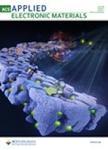版权所有:内蒙古大学图书馆 技术提供:维普资讯• 智图
内蒙古自治区呼和浩特市赛罕区大学西街235号 邮编: 010021

作者机构:Natl Taiwan Univ Dept Engn Sci & Ocean Engn Photon Grp Taipei 10660 Taiwan Natl Chi Nan Univ Dept Appl Mat & Optoelect Engn Nantou 54561 Taiwan
出 版 物:《ACS APPLIED ELECTRONIC MATERIALS》 (ACS Appl. Electron. Mater.)
年 卷 期:2025年第7卷第1期
页 面:225-235页
核心收录:
基 金:Ministry of Science and Technology, Taiwan Ministry of Science and Technology of Taiwan [113-2221-E-260-001] MOST
主 题:photodetector array Cu2O self-powered machine learning wavelength recognition
摘 要:The ability of a photodetector array (PDA) to detect multiple wavelengths significantly expands its range of potential applications. However, effectively detecting and distinguishing between different wavelength bands remains a challenge for these arrays. This study introduces an approach for wavelength recognition in PDAs by integrating machine learning techniques with solution-processed Cu2O/Si heterojunction photodetectors. We propose a simple solution-processing method to fabricate a PDA consisting of a 4 x 4 array of p-Cu2O/n-Si photodiodes. This method involves low-power UV irradiation of a molecular precursor film containing Cu (II) complexes to produce a p-type Cu2O thin film on a Si substrate. A UV-shielding glass plate is used as a patterning mask, and water is used to wash away the UV-shielded areas. Using machine learning techniques, we effectively classify various wavelengths of light, including UV, visible, and near-infrared, and accurately predict their corresponding photocurrents in the Cu2O/Si heterojunction. Notably, the PDA enables clear identification of images across different light wavelengths. This PDA paves the way for advanced applications in multispectral imaging and sensing technologies.